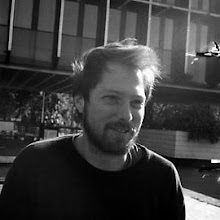Various Notes:
It has been a while since my last post, which was just after the first part of the University of Manchester field course. The rest of the field course, which took place in the Community of San José de Payamino in the Ecuadorian Amazon went very very well. The group of students we had this year was very very motivated and I was given the all clear to head a small expedition into some more remote forest, which I think all the students enjoyed.
Since then I have been running around like mad. I headed back to Quito after the field course finished and spent a night there getting Richard (my boss) to go through some last minute statistics with me. I then flew back to lovely Coca to conduct some follow up interviews and present some of the preliminary results of my study in the Communities I had visited last year and then headed up to Tena for a meeting with the National Park people and to lead a community based fern biodiversity monitoring workshop we organized with the German Development Service.
The workshop went better than I could have expected, despite the logistical difficulties logistics of trying to organize a research project with 20 people. I also organized the logistics of my research internship with the GTZ, which started on the first of September. In late August I headed back to Quito to give a seminar at the FLACSO.
On the 23rd I picked up Nick, my new field assistant and after 3 days of intense shopping in Quito we flew back to Coca to head to Verde Sumaco, where we spent 27 days sampling ferns, frogs and beetles and conducting household interviews to get an idea of how the community works. The community is four and a half hours up the river Paushi Yacu. We worked fast and very well with the help of Raúl Shiguango, our guide and also the help of the two park wardens. We also ended up camping in some remote forest for a week, which was an interesting experience in itself and a relief from the 3 AM wake up calls from both the community of roosters living under our hut and the generator at the neighbors house.
The site we camped at was our plan B. Plan A was a small hut a further 4 hours upstream along a very small river called the Puru Yacu. The water was so low that we spent a good few hours digging trenches and removing stones and gravel to be able to pull and push the canoe up the river. After about 3 hours we decided that the location was too remote and the river to low to be able to pull someone out in case of an emergency. Instead we camped half an hour upstream from the community and the hiked to the sites where planned to sample. The distance was not very far but the terrain very though and it usually took us 45 min. to walk 1.5 km.
We are now back in Coca and were supposed to head to the new community today, but due to technical difficulties, we will not head out until tuesday next week. It gives us a few more days to sort out all our gear and relax before some more very heavy fieldwork.




1 Comments:
This comment has been removed by a blog administrator.
Post a Comment
<< Home